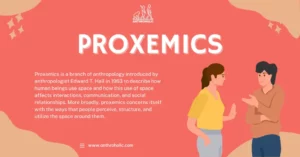AI Answer Evaluation Platform Live Now. Try Free Answer Evaluation Now
Bio-cultural Adaptations Genetic and Nongenetic factors
Understanding human evolution requires an integrated approach, combining biological and cultural aspects. This article highlights the fascinating interplay between genetics and cultural adaptations, offering a comprehensive insight into bio-cultural adaptations.

What is Bio-cultural Adaptation?
Bio-cultural adaptation refers to the symbiosis of cultural practices and biological adaptations over time. It involves the interplay between genetics, culture, and environment, which consequently shapes human behavior, physiology, and morphology [1].
Genetic Factors in Bio-cultural Adaptation
Genetic Adaptation
Genetic adaptation involves changes at the genetic level that increase an individual’s or population’s fitness in a specific environment. This process is driven by natural selection and can result in various physiological or behavioral changes.
Case Study: High-altitude Adaptation
Tibetan populations illustrate the role of genetic adaptations in bio-cultural adaptation. They thrive at high altitudes due to the EPAS1 gene that improves oxygen metabolism, a clear response to the hypoxic environment [2].
Non-genetic Factors in Bio-cultural Adaptation
Cultural Adaptation
Cultural adaptations involve learned behaviors passed down generations, rather than changes at a genetic level. These are often immediate responses to environmental changes, and may subsequently drive genetic adaptations.
Case Study: Lactose Tolerance
Lactose tolerance in adults provides an example of cultural adaptation leading to genetic change. Initially, human adults couldn’t digest lactose. However, with the advent of animal husbandry, societies began consuming dairy products, leading to the spread of lactase persistence gene [3].
Technological Adaptation
Technological advancements also contribute to bio-cultural adaptation. They often complement or initiate cultural and genetic adaptations.
Case Study: Clothing and Shelter
The invention of clothing and shelter technology allowed early humans to inhabit colder regions. This technological adaptation likely contributed to further genetic changes, such as alterations in skin pigmentation and metabolism [4].
The Interplay of Genetic and Non-genetic Factors
The synergy between genetic and non-genetic factors forms the basis of bio-cultural adaptation. Often, cultural or technological adaptations trigger genetic changes, enhancing a population’s survival in a given environment. However, it’s also possible that initial genetic changes can stimulate cultural or technological adaptations. The following table represents some of these adaptations:
| Environment | Genetic Adaptation | Cultural/Technological Adaptation |
|---|---|---|
| High altitude | Enhanced oxygen metabolism (EPAS1 gene) | Acclimatization practices, diet adjustments |
| Arctic regions | Increased body fat, shorter limbs for heat retention | Clothing and shelter technology, fat-rich diets |
| Disease-ridden areas | Sickle cell trait conferring malaria resistance | Use of mosquito nets, developing antimalarial drugs |
The Future of Bio-cultural Adaptation
Human bio-cultural adaptation will continue as long as environmental changes persist. For instance, the current trend of urbanization is likely to provoke new genetic, cultural, and technological adaptations.
However, it’s worth noting that modern technology and healthcare may reduce the natural selection pressure on genetic adaptation. This, in turn, could allow cultural and technological adaptations to play a more prominent role in our future evolution.
Cultural Influences on Genetic Adaptations
Bio-cultural adaptation is a complex process, whereby cultural practices can catalyze genetic changes in a population.
Diet and Genetic Adaptation
One of the most striking examples of how culture influences genetics is the impact of diet on our genes. As mentioned earlier, the persistence of the lactase enzyme in adults, necessary for the digestion of lactose in dairy products, evolved after humans started dairy farming [3].
Another example is the prevalence of a gene variant that aids starch digestion in populations with historically starch-rich diets, like agricultural societies. This genetic adaptation was less frequent among hunter-gatherers, who consumed less starch [5].
Cultural Practices and Genetic Immunity
Certain cultural practices also lead to genetic changes conferring resistance against diseases. Sickle cell trait, offering resistance to malaria, is prevalent in regions where malaria is endemic. This genetic adaptation is also influenced by the cultural practice of farming in these regions, which often creates conditions conducive to the spread of malaria [6].
Genetic Influences on Cultural Adaptations
While cultural practices can induce genetic changes, the converse is also true. Genetic predispositions can influence cultural behaviors and practices.
Genetic Taste Preferences and Cultural Cuisine
Genetic variations influencing taste perception can impact cultural practices like food preferences and dietary habits. For example, some people have a genetic variation that makes them ‘supertasters,’ experiencing flavors, especially bitterness, more intensely. These genetic variations can impact cultural cuisine and dietary habits over time [7].
Genetic Adaptations and Technological Innovations
Genetic adaptations to certain environments can also influence the development of cultural and technological innovations. For instance, genetic adaptations to cold environments, such as increased metabolic rates or improved cold perception, could have contributed to the development of clothing and shelter technology [4].
Conclusion
Bio-cultural adaptation underscores the dynamic relationship between human genetics and culture. This complex interplay has shaped our species over thousands of years, enabling us to adapt and thrive in diverse environments worldwide. While the environment continues to mold our genetic and cultural adaptations, the advancements in technology and globalization may redefine this relationship in unforeseen ways.
References
[1] James H. Jones, “The force of selection on the human life cycle,” Evolution and Human Behavior, 31 (2010): 271-279.
[2] Beall, C.M., “Two routes to functional adaptation: Tibetan and Andean high-altitude natives,” Proc Natl Acad Sci U S A, 104 Suppl 1 (2007): 8655-60.
[3] Leonardi, M., et al., “The evolution of lactase persistence in Europe. A synthesis of archaeological and genetic evidence,” International Dairy Journal, 22 (2012): 88-97.
[4] Gilligan, I., “Neanderthal extinction and modern human behaviour: the role of climate change and clothing,” World Archaeology, 39 (2007): 499-514.
[5] Perry, GH., et al., “Diet and the evolution of human amylase gene copy number variation,” Nature Genetics, 39 (2007): 1256-1260.
[6] Kwiatkowski, DP., “How malaria has affected the human genome and what human genetics can teach us about malaria,” American Journal of Human Genetics, 77 (2005): 171-192.
[7] Kim, UK., et al., “Positional cloning of the human quantitative trait locus underlying taste sensitivity to phenylthiocarbamide,” Science, 299 (2003): 1221-1225.




